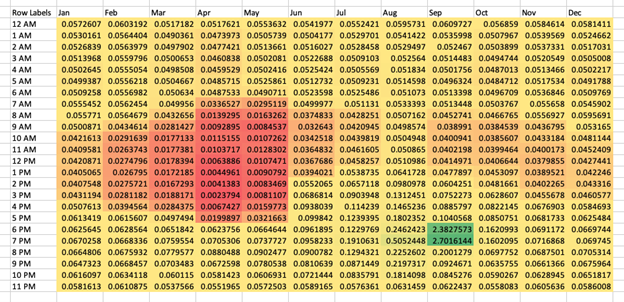Solar companies, big and small, from local installers to OEMs, united with organizations like the California Solar & Storage Association (CALSSA) to fight against the end of California’s net-energy-metering solar incentive program. There were many credible and important justifications against the proposed changes, such as significantly reducing California’s residential solar market, harming California residents’ ability to have a competitive alternative to electric utilities, hurting solar employment, negatively impacting California’s ability to reach its climate goals and even damaging the entire solar industry.
But California went ahead with cutting NEM. And while CALSSA has said that it was able to prevent some of the worst parts of the rate change from being implemented, many of the warnings still came true. According to a survey performed by CALSSA, “17,000 jobs have or will be lost by the end of 2023 due the recent net-metering changes,” representing “22% of all solar jobs in California and the largest loss of solar jobs in U.S. history.”
The California Public Utilities Commission (CPUC) has routinely said that the changes to NEM were intended to incentivize solar + storage installations. But no such incentives have materialized and the rates tell a different story. According to CPUC’s export rates, there are only a few hours in the entire year when there is a financial incentive to sell energy back to the grid.

Credit: Enphase
This screenshot of the PGE export rates for 2023 demonstrates that NEM 3.0 is net metering in name only. Learning from the successful destruction of NEM in California, utilities in other states are trying to move to time-of-use (ToU) rates. For instance, there has been recent news of Maine, Minnesota and Missouri announcing plans to transition to ToU. So, is ToU the next battlefront for clean energy? Should solar lobbying be focused on implementing ToU rates that truly support distributed energy instead of preserving NEM?
ToU rates can be beneficial to both utilities and energy consumers alike, but often this rate structure is implemented in a way that only benefits utilities and becomes just another rate hike for consumers. If there are not policies to promote technology for true demand-side management, then consumers usually end up paying more for the same exact service because behavioral changes are too difficult or even impossible. If utilities want to reduce demand and electrical network congestion during peak hours, a pre-condition of moving to ToU rates should be a binding plan to incentivize DERs for their customers and deployment of centralized DERMs platforms, like VPPs. Otherwise, all they are doing is surcharging.
While as a community, we should still be fighting for NEM, especially in areas where the penetration rates of solar remain low, we need to simultaneously build our second line of defense for the equitable implementation of ToU. Otherwise, the distributed and democratized energy will be in grave danger.
 Jessica Fishman is a strategic marketing leader with nearly 20 years’ experience, including seven years as head of global public and media relations at inverter maker SolarEdge. Passionate about addressing climate change by accelerating the clean energy transition, she has worked at leading renewables companies, building marketing and communications departments.
Jessica Fishman is a strategic marketing leader with nearly 20 years’ experience, including seven years as head of global public and media relations at inverter maker SolarEdge. Passionate about addressing climate change by accelerating the clean energy transition, she has worked at leading renewables companies, building marketing and communications departments.





California is a Democratic Super Majority that “claims” the World will END withOUT 93 TRILLION dollars put into an Ex Bartenders control! And to save “the poor” (their OTHER go to) all MUST go SOLAR! So the CPUC, which is a board of 5 people, appointed by the Governor, for 6 year terms…which means…ALL 5 members were appointed BY DEMOCRATS! They all have previous work “experience” for OR with the state of California. They make 6 figures and IF…they do as they are told, will have great pensions and ANOTHER state job by letting the BIG 3 of electricity do as they want. As the BIG 3 have given a Boat Load of $$$$$ to the Dems!!!
All about the Benjamin’s…..don’t think so….ask yourself 1 question…IF, you were TRUELY trying to “Save the World” from Climate BS would you make going solar MORE Expensive?????
Answer…NO!
This is all a pay off and other states will follow. Just buy a battery…where before you didn’t need one. And Remove 75% of the value! Why would someone like the Political Pat Reilly care?!?!?!? He gets paid buy US…citizens…Ain’t his $$$…he didn’t even care when the deadliest Disease in Century hit….he needed to get his MASKLESS French Laundry on! Just spend MORE $$$ and Get LESS!!! The Dem Way!
Too many on the take.
They just KILLED a perfectly fine industry…Vote them out or leave the state…I have made my voice heard to Guy Smiley all the way down to my local mayor.
They don’t care…my only hope is that something like Chevron Deference will be applied to the CPUC, a group of 5 that is NOT voted in and can’t be voted out, DECIDING for a whole state! While “hired” to “protect” us whom?!?!? the BIG 3 of Electricity….in that….they have failed!!! They need to go….But they get paid…while we/them get Laid(off)….No you know the truth….what are YOU going to do????
The title of this opinion piece is”Has solar lost the net-metering battle?”. In order to answer this question we need to take a look back in history. It wasn’t all the long ago that consumers with rooftop solar reported seeing their meters spinning backwards. The old analog meters lacked a time keeping feature, and yet even with a variable electric supply and demand over the days and nights the utilities still managed to affordable keep the lights on. The old analog meters had an obvious Achilles heel, and that was that they required an army of meter readers. Net Energy Metering (NEM) wasn’t dependent on the transition to Smart meters! Rather initially the transition to Smart meters was seen as a means to shed the substantial costs of human meter readers. A side benefit to the Utilities was the new ability to push Time of Use (ToU) billing. The excuse for spiking consumer costs just as the majority of consumers get home from work for the afternoon and begin to prepare dinner was that it was necessary to encourage conservation. Meanwhile when consumers cut back on usage, i.e. use less kWhs, PG&E asked for and received a rate increase from the CPUC.
So, why did PG&E and the other utilities push ToU for all solar customers? Call me cynical, but it appears to have been to maximize their profits! Rates spike just as the sun is going down on consumer’s solar panels. This isn’t a coincidence!
In my opinion, this is not a strategically messaged opinion piece. The issues we face in California and across the country are so much more complex. The powerful utility lobby we are up against in California and across the country is undoubtedly cheering at this headline. TOU rates are not a silver bullet though we agree they are a piece of the puzzle. Rebuilding California’s DG market and protecting other state markets from similar harm will require many different policy initiatives but more importantly it requires a unified industry, direct political engagement, and a continuation of the positive vision solar is famous for.